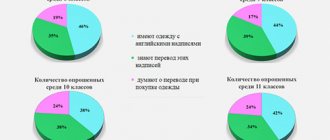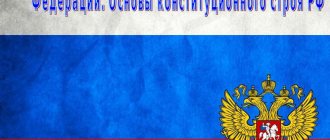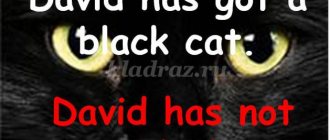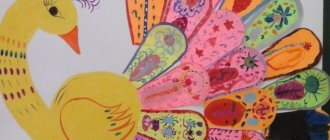The story of one Halloween holiday - presentation
The story of one Halloween holiday Olga Aleksandrovna Rodina, Olga Aleksandrovna Rodina, English teacher of MAOU “Lyceum 9”, Perm 900igr.net
Halloween (eng. Halloween, All Hallows' Eve or All Saints' Eve) English. A modern holiday that dates back to the traditions of the ancient Celts of Ireland and Scotland, the history of which began in the territory of modern Great Britain and northern Ireland. Celebrated on October 31, the eve of All Saints' Day. A modern holiday that dates back to the traditions of the ancient Celts of Ireland and Scotland, the history of which began in the territory of modern Great Britain and northern Ireland. Celebrated on October 31, the eve of All Saints' Day.
Celebrated on October 31, the eve of All Saints' Day.
Halloween is traditionally celebrated in English-speaking countries, although it is not an official day off. Halloween is celebrated informally in some other countries with close cultural ties to the US or UK, such as Japan, South Korea, Singapore, Australia and New Zealand, a number of island countries in Oceania, and more recently in Russia and the CIS. Halloween is traditionally celebrated in English-speaking countries, although it is not an official day off. Halloween is celebrated informally in some other countries with close cultural ties to the US or UK, such as Japan, South Korea, Singapore, Australia and New Zealand, a number of island countries in Oceania, and more recently in Russia and the CIS.
Holiday symbols Most holiday symbols have a long history. For example, the tradition of making jack-o'-lanterns comes from the Celtic custom of creating lanterns to help souls find their way to purgatory. Most holiday symbols have a long history. For example, the tradition of making jack-o'-lanterns comes from the Celtic custom of creating lanterns to help souls find their way to purgatory.
Jack-o'-lantern Jack-lantern The main symbol of the holiday is the so-called Jack-o'-lantern. It represents a pumpkin on which a sinisterly grinning face is carved; A lighted candle is placed inside the pumpkin, but originally rutabaga or turnips were used to make them. The main symbol of the holiday is the so-called Jack-o'-lantern. It represents a pumpkin on which a sinisterly grinning face is carved; A lighted candle is placed inside the pumpkin, but originally rutabaga or turnips were used to make them.
Costumes The main theme of Halloween costumes is various evil spirits or fairy-tale characters. But in the century, not only costumes of fantastic creatures, but also even costumes on a completely arbitrary theme also became popular, although the main motif continues to remain the most common. The main theme of Halloween costumes is various evil spirits or fairy-tale characters. But in the century, not only costumes of fantastic creatures, but also even costumes on a completely arbitrary theme also became popular, although the main motif continues to remain the most common. Witch Costume Bat
Vampire, witch, zombie costumes
Traditions The tradition of dressing up in costumes and going from house to house begging for sweets dates back to the Middle Ages and was originally associated with Christmas. In England and Ireland, from ancient times, poor people went from house to house and begged for so-called “spiritual cakes” on All Saints’ Day (November 1), promising in exchange to pray for the souls of the deceased relatives of the owners. The tradition of dressing up in costumes and going from house to house begging for sweets dates back to the Middle Ages and was originally associated with Christmas. In England and Ireland, from ancient times, poor people went from house to house and begged for so-called “spiritual cakes” on All Saints’ Day (November 1), promising in exchange to pray for the souls of the deceased relatives of the owners.
Trick-or-treating The term Trick-or-treating was first used in the United States, with its first use recorded in 1934. Literally it can be translated as Trick or Treat, and indicates a comic threat to cause harm if the owner does not bring the children a treat. The term Trick-or-treating first began to be used in the United States, with its first use recorded in 1934. Literally it can be translated as Trick or Treat, and indicates a comic threat to cause harm if the owner does not bring the children a treat.
Fortune telling In addition to begging for candy and wearing various costumes, a number of specific games and fortune telling are also common on Halloween. According to legend, young girls should climb the stairs in a dark house, walking backwards, and hold a candle in front of the mirror. After this, they should try to see the face of their betrothed in the reflection. But there is also a possibility that the girl will see the face of the skull and this will mean that she will die before marriage. In addition to begging for candy and wearing a variety of costumes, a number of specific games and fortune telling are also common on Halloween. According to legend, young girls should climb the stairs in a dark house, walking backwards, and hold a candle in front of the mirror. After this, they should try to see the face of their betrothed in the reflection. But there is also a possibility that the girl will see the face of the skull and this will mean that she will die before marriage.
Attractions An important tradition of celebrating Halloween is the organization of so-called Haunted attractions (Russian: Attractions inhabited by ghosts), the main goal of which is to pleasantly scare visitors. The oldest such attraction is considered to be the “Haunted House of Orton and Spooner”. An important tradition of celebrating Halloween is the organization of so-called Haunted attractions (Russian: Attractions inhabited by ghosts), the main goal of which is to pleasantly scare visitors. The oldest such attraction is considered to be the “Haunted House of Orton and Spooner”.
Attractions The main purpose of attractions is to pleasantly scare visitors. The oldest such attraction is considered to be the Haunted House of Orton and Spooner. The main goal of the attractions is to pleasantly scare visitors. The oldest such attraction is considered to be the Haunted House of Orton and Spooner.
Treats Since the holiday falls during the apple harvest, most Halloween candy is apple-based. Apple caramel, apples in syrup (sometimes with the addition of nuts), and apple toffee are prepared especially for the celebration. Apple compote is made. Since the holiday falls during the apple harvest, most Halloween candy is apple-based. Apple caramel, apples in syrup (sometimes with the addition of nuts), and apple toffee are prepared especially for the celebration. Apple compote is made.
Traditional holiday colors are black and orange black and orange
Quiz 1. What date is Halloween celebrated? 2. What are the traditional colors of this holiday? 3. How can the term Trick-or-treating be translated into Russian? 4. What treats do children get on this holiday? 5. Name the symbol of this holiday. holiday.
Quiz 6. Name the main traditions of the holiday. 7. In which countries was Halloween originally celebrated? 8. In which countries is the holiday celebrated nowadays? 9. What costumes do children usually dress up in? 10. Why do people make Jack-o'-lantern Jack-o'-lantern Jack-o'-lantern?
Presentation “Halloween” presentation for an English lesson (grade 7) on the topic
Slide 1
Halloween
Slide 2
Halloween Halloween is a festival that takes place on October 31. In the United States children wear costumes and masks and go trick or treating. Halloween is a holiday celebrated on October 31st. In the United States, children dress up in fancy dress and masks and go door to door asking for candy.
Slide 3
Jack – o'lante r ns Many of them carve lanterns from pumpkins. Popular activities are fortune telling, telling stories about witches and ghosts. Many of them carve jack-o'-lanterns. Popular pastimes include fortune telling, stories of witches and ghosts.
Slide 4
New Year festivals Halloween developed from New Year festivals and festivals of the dead. Halloween evolved from New Year's Day and celebrations honoring the dead.
Slide 5
All Saints' Day Christian church established a festival on November 1 called "All Saints' Day" so that people could continue to celebrate their festivals. The Christian Church founded a holiday on the first of November, called "All Saints' Day", so that people could continue the festivities.
Slide 6
All hallows' Eve The Mass said on All Saints' Day was called “All hallowmass”. The day before All Saints' Day was known all hallows' Eve. The Mass celebrated on All Saints' Day was called All Hallowmas. The day before All Hallows' Day was called All Hallows' Eve.
Slide 7
Trick or treating The main Halloween activity for children is trick or treating. Children dress in costumes and masks and go from door to door saying “trick or treat”. The main fun for children on Halloween is begging for candy. Children dress up in fancy dress and masks, go from house to house and say: “Give me a treat, or we’ll play a joke.”
Slide 8
Treats The neighbors give children such treats as candy, fruit and pennies so that children do not play tricks on them. Neighbors give children treats such as candy, fruit, and change to prevent children from playing tricks on them.
Slide 9
Jack o' lanterns Jack o' lanterns are hallowed out pumpkins with face carved into one side. Most jack o' lanterns contain a candle inside. Halloween lanterns are empty pumpkins with a face carved on one side. Most lanterns have a candle inside.
Slide 10
Irish legend An Irish legend says that jack-o'-lanterns are named after the man called Jack. Irish legend says that Halloween lanterns are named after a man named Jack.
Slide 11
Jack He could not enter heaven because he was a miser, and he could not enter hell because he had played jokes on devil. As a result, Jack has to walk on the earth with his lantern until Judgment Day. He couldn't go to heaven because he was a miser, and he couldn't go to hell because he played tricks on the devil. As a result, Jack is forced to wander the earth with his lantern until Judgment Day.
Slide 12
Fortunetelling Fortunetelling is an important part of Halloween. For example, a coin, a ring, and a thimble were baked into a cake. It was believed that the person who found the coin would become wealthy. Fortune telling is an important part of Halloween. For example, a coin, a ring and a thimble are baked into a pie. It was believed that whoever found the coin would become rich.
Slide 13
Ring and thimble The one who found the ring would marry soon. And the person who found the thimble would never get married. It was believed that whoever found the ring would soon get married. And the one who finds the thimble will never marry or be married.
Slide 14
Card- reading Today people practice card- reading or palmistry. Today people use card fortune telling and palm reading.
Slide 15
Ghosts and witches People once believed that there were many ghosts and witches on the Earth and that they met on October 31 to worship the devil. People once believed that the earth was full of witches and that they met on October 31st to worship the devil.
Slide 16
Halloween Today, people do not believe in ghosts and witches but they like to tell stories about them on Halloween. Today people don't believe in ghosts and witches, but they love to tell stories about them on Halloween.
Slide 17
Halloween
Slide 18
The presentation was prepared by E.A. Siroshtanova. MBOU Secondary School No. 76, Gigant village 2014
Halloween: traditions and customs
October 31, 2015
3902
3
Few modern fans of such a holiday as Halloween know that its history is connected with the culture of the ancient Celts, who inhabited Europe more than 2000 years ago. The revered and respected holiday had a special esoteric meaning.
For the ancient tribes that once occupied modern England, Ireland, as well as the northern part of France, there were only two (instead of the current four) seasons: summer and winter. The last day of summer was considered October 31, the day when the harvest ended. At the same time, according to beliefs, it was during the winter period that dark forces began to rule the earth.
The New Year among the Celts was celebrated on the night of October 31; on the same night, according to ancient beliefs, the gates that served as the border between the world of the living and the other world swung open, which allowed evil spirits to make their way to the earth. A special ritual - Samhain - was carried out to help the forces of light overcome unclean spirits. Ritual fires, kindled by the sacred priests - the Druids, were considered reliable protection, and therefore they were kept throughout the long winter, and only extinguished on the day of the spring equinox. The Celts themselves turned out the lights in their houses and also wore animal skins to scare away uninvited guests. In order to appease the evil spirits, the owners of the house left numerous treats at the doorstep.
Particular attention was paid to the pumpkin as a sacred symbol of the holiday, representing not only the end of the harvest and the summer season, but also scaring away ghosts with the help of a fire that was kindled right inside the pumpkin itself.
Gradually, these ancient traditions were joined by later ones, which have survived to this day. One such tradition is the popular apple contest. The ancestors of this and other entertainment can be considered the Romans, who once occupied the Celtic lands and spread their customs there, in particular, celebrations praising Pomona (the goddess of plants), which also dated from the transition from October 31 to November 1. It was the apple that was its main symbol.
The name Halloween is a transformed expression All Hallows Even, which translated means All Saints' Day, the official celebration of which Gregory III set by official decree for the date - November 1.
Modern Halloween, and the holiday we know as it is, is the result of a close blending of pagan Celtic and later Christian customs. For example, the existing tradition of carving jack-o'-lanterns also has a different interpretation, brought to North America by Irish emigrants, where it gained particular popularity. According to this interpretation, this tradition (carving jack-o'-lanterns) originated from the famous old Irish legend about Stingy Jack.
According to legend, Jack was a cunning and greedy blacksmith, who had to put a lot of effort into deceiving the ruler of the underworld, not once, but twice. The first time - by asking him to turn into a coin and placing it in his pocket, where there was a small silver cross, and the second time - by persuading him to climb a tree on which an enterprising blacksmith had scratched a cross. Cunning Jack's reward was the Devil's promise not to demand the blacksmith's soul after death. Alas, the privileges he received turned out to be useless, since the gates of heaven turned out to be out of reach for Jack during his sinful life. The restless blacksmith turned out to be of no use to either the Devil or God. In anticipation of the Day of Judgment, he had to wander the world restless. All Jack had left was a small piece of coal. Having placed it in an ordinary pumpkin to protect it from the rain, Jack illuminated his path with this lantern. So this flashlight got the name Jack of the Lanterns, or Jack-o-lanterns for short.
Another famous tradition associated with Halloween is the children's game 'Trick or Treat'. All you need to play is a group of kids dressed up in "creepy" carnival costumes and a couple of neighbors willing to take part in the game. Typically, people who want to participate decorate the entrance of their home with the aforementioned jack-o'-lanterns and other decorations. Children walking from house to house beg for sweets with the question:
'Trick or treat?' - Trick or treat?
In order to avoid a cruel joke (for example, door handles smeared with soot), the hosts must pay off the guests with treats. Some of them prefer to simply leave sweets at the entrance to the house, while others, who are more interested, ask the kids to complete some tasks to get what they want.
Halloween these days is a terribly fun holiday. Masquerades in creepy costumes, competitions, trick-or-treating, and fun pumpkin decorations are all traditional. But in each country, the way of celebrating Halloween is special and completely unique.
In America, this holiday appeared as an element accompanying emigrants from Ireland who entered the United States. Gradually, local residents became imbued with the spirit of the “terrifying” carnivals, and costume processions began to take place everywhere. Halloween now has two capitals, where the scope of parties reaches incredible proportions - New York and Los Angeles. The famous pumpkin pie has become traditional in addition to which the obligatory menu also includes rare steak (or simply meat of varying degrees of roasting). Even the most sophisticated viewer can be amazed by the abundance of awesome cocktails served in bars on this day, as well as sophisticated outfits that only become more creative from year to year.
Some may not believe it when they hear that the prim English, known for their reserve, are having fun and rejoicing like children on this day. However, numerous parties and noisy crowds of children demanding candy from neighbors are convincing proof of the popularity of Halloween in the UK. Numerous ancient castles and buildings make it possible to give the holiday an even more mystical character, because such excursions held on the eve of this day excite the imagination of tourists and local residents. Integral elements of such events are strange sighs and sounds made by prisoners tortured within these walls, as well as the appearance of ghosts and apparitions. Inns and hotels located in ancient houses also provide holiday programs, for example, some hold séances with spirits.
The French celebrate Halloween with their usual culinary delights - dishes like "The Witch's Fingers" are in extraordinary demand. Since November 1 is associated with the remembrance of the dead, “cemetery dinners” are traditional for Halloween in France. And even Disneyland and its many kind and sweet characters are transformed beyond recognition: instead of Winnie the Pooh and Mickey Mouse, Morgana, Jafar and other villains reign here.
It must be said that in Russia the holiday, so popular almost all over the world, is just beginning to gain momentum. Celebrating it at home is not so interesting for Russians, and very few people strive to decorate their home with the attributes and symbols of Halloween. Celebrations are held on a much larger scale in nightclubs and cafes. Many establishments organize themed parties, traditionally decorating the halls in orange and black shades.
For the Haloween party, young people dress up in pre-prepared and carefully thought out costumes, because competitions are often held where they choose the most original and most terrifying outfit. Therefore, the scarier the better! Intricate masks, wigs, images, unimaginable makeup and make-up for Halloween - all this is gradually but steadily coming into fashion. At the same time, the holiday in Russia has a unique flavor that cannot be observed in any other country. No one can so masterfully combine world-famous villains and heroes of fairy tales (for example, Freddy Krueger and Ilya Muromets So a holiday with a centuries-old history is acquiring a modern look before our eyes.





